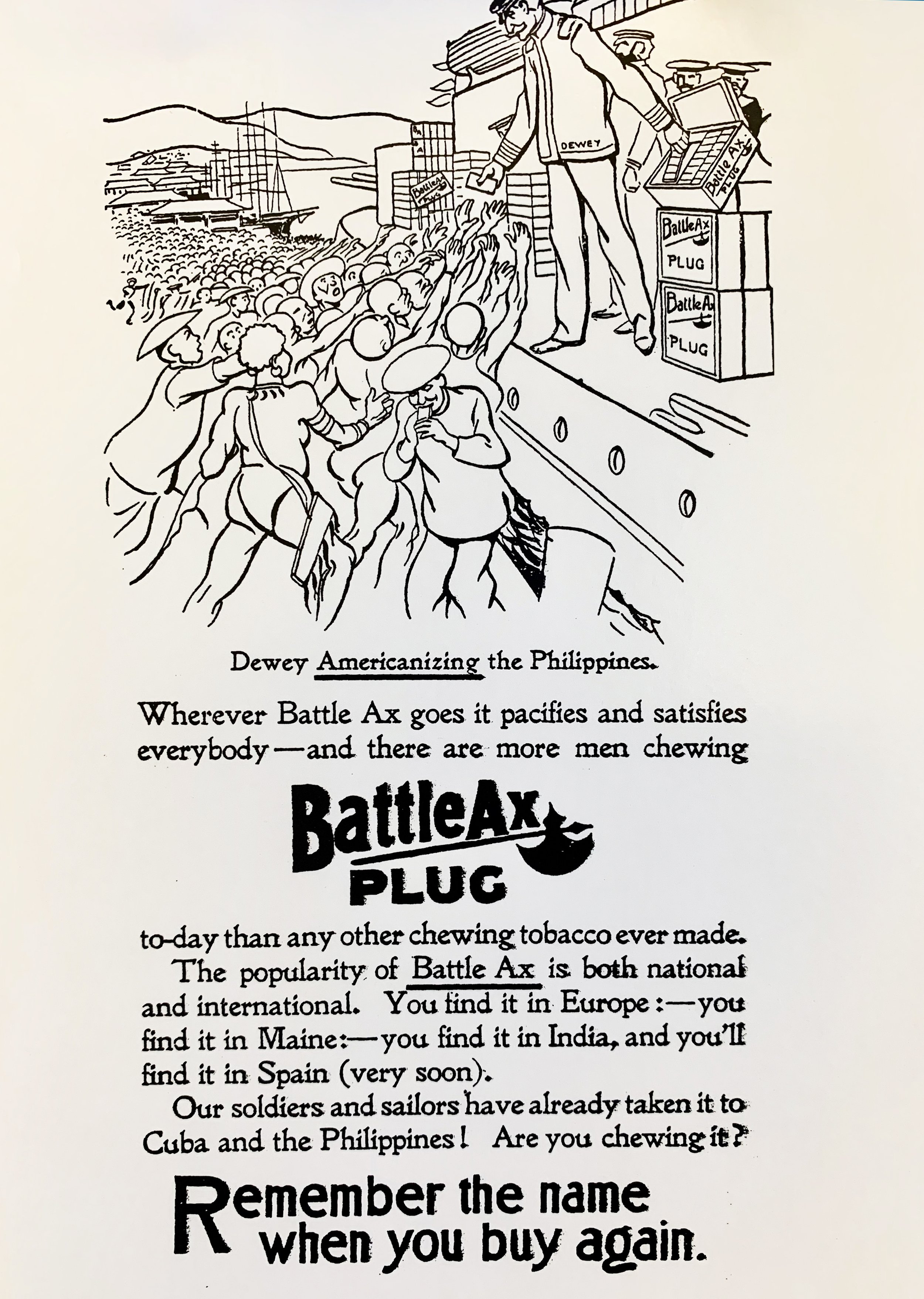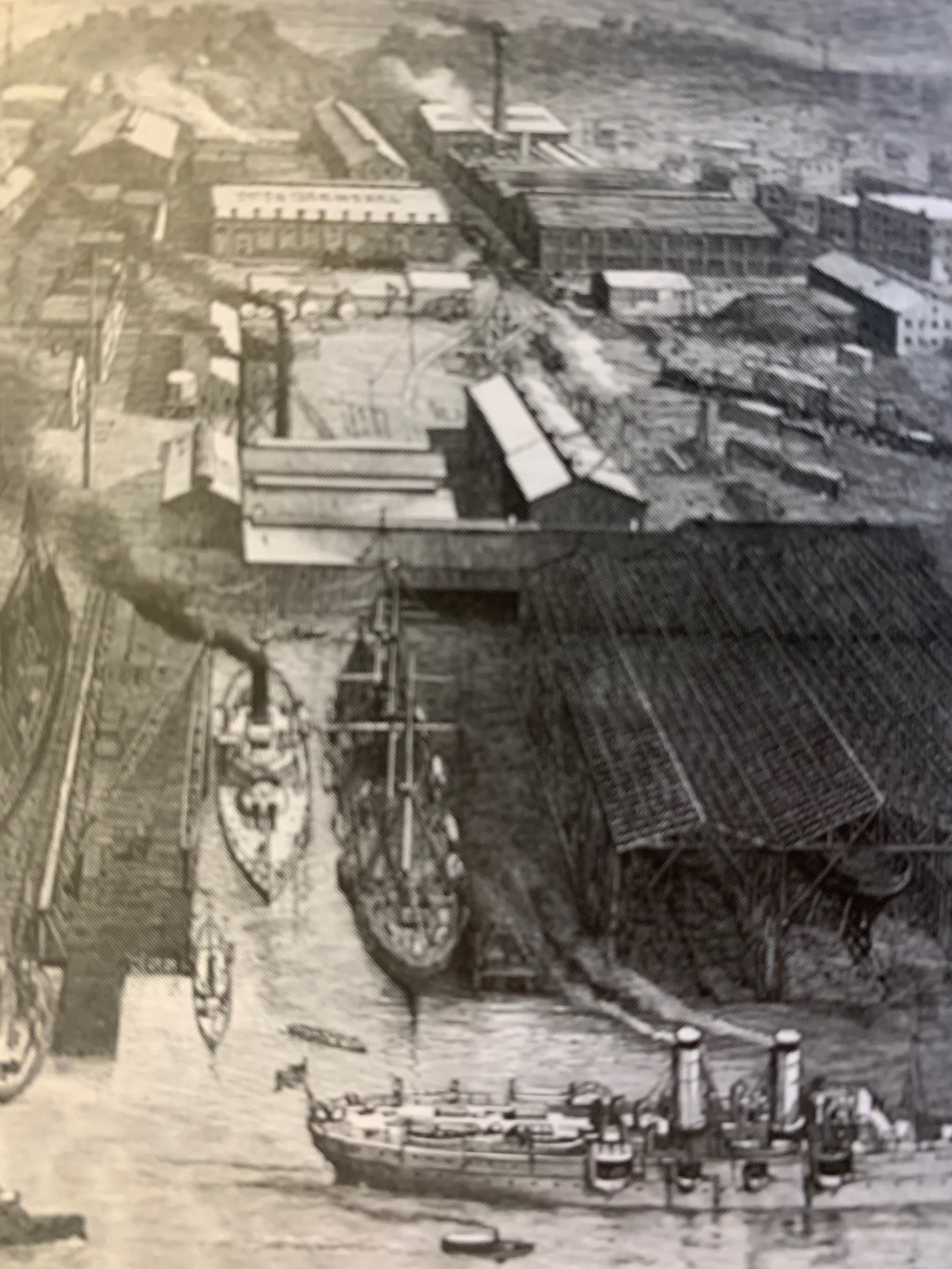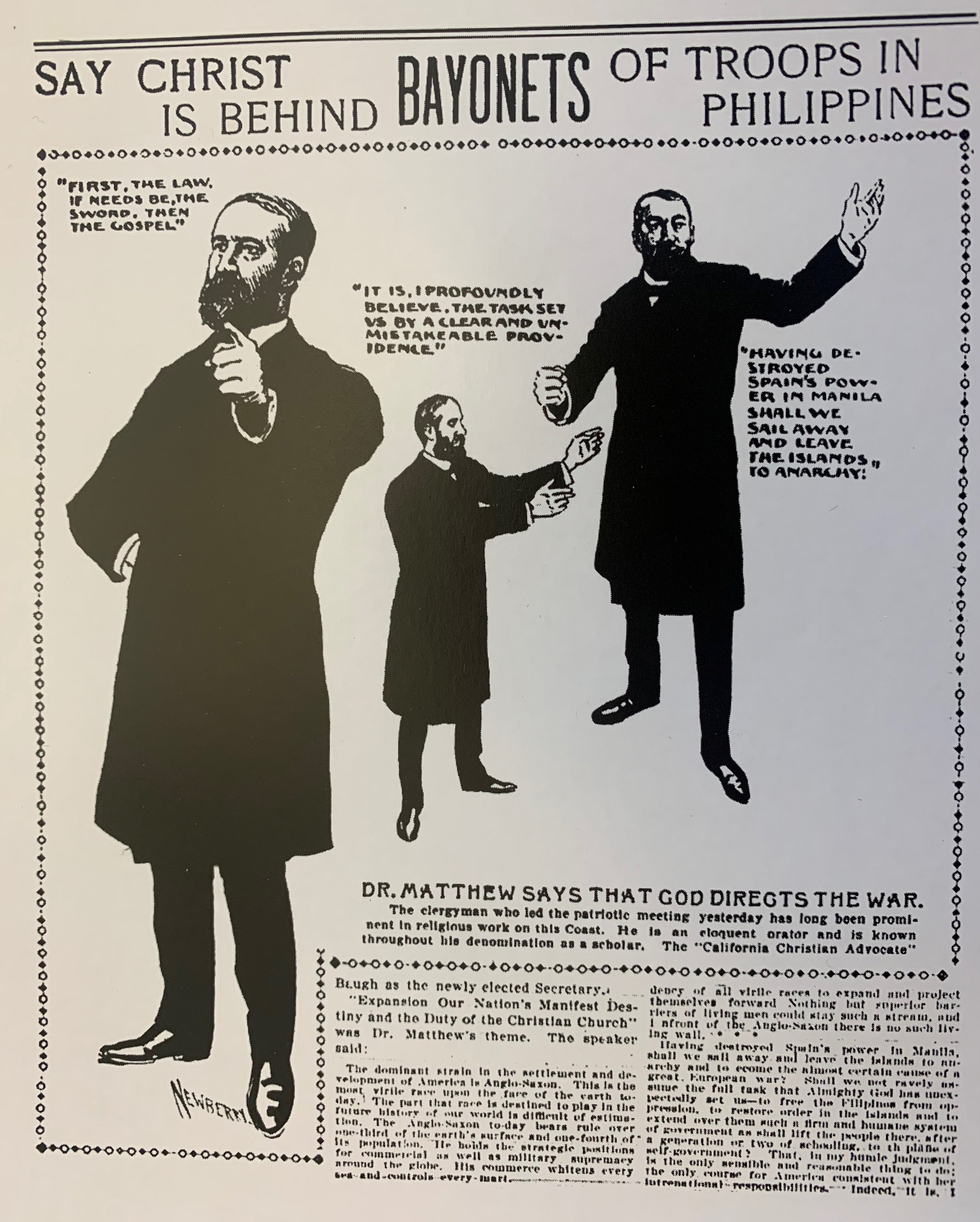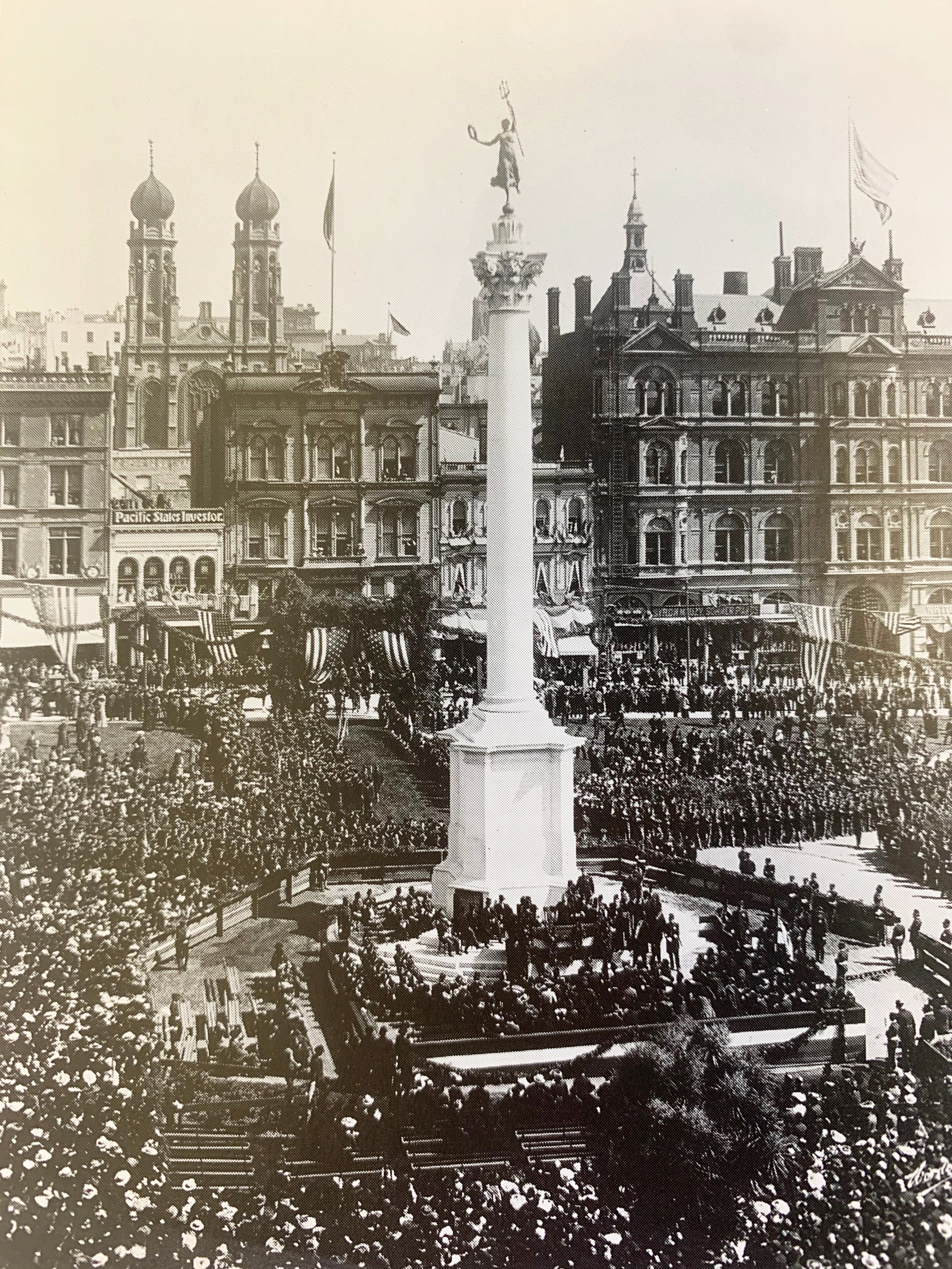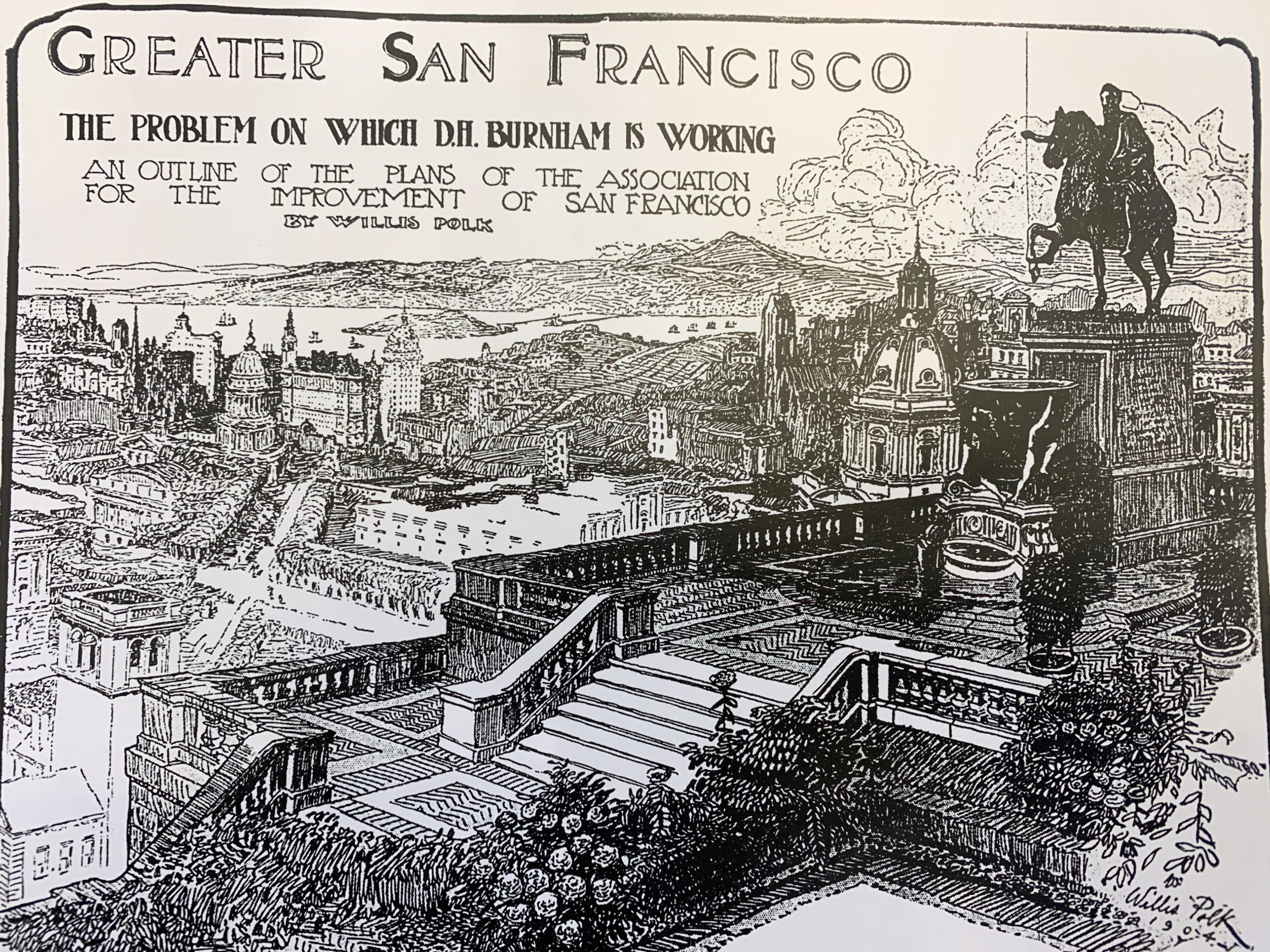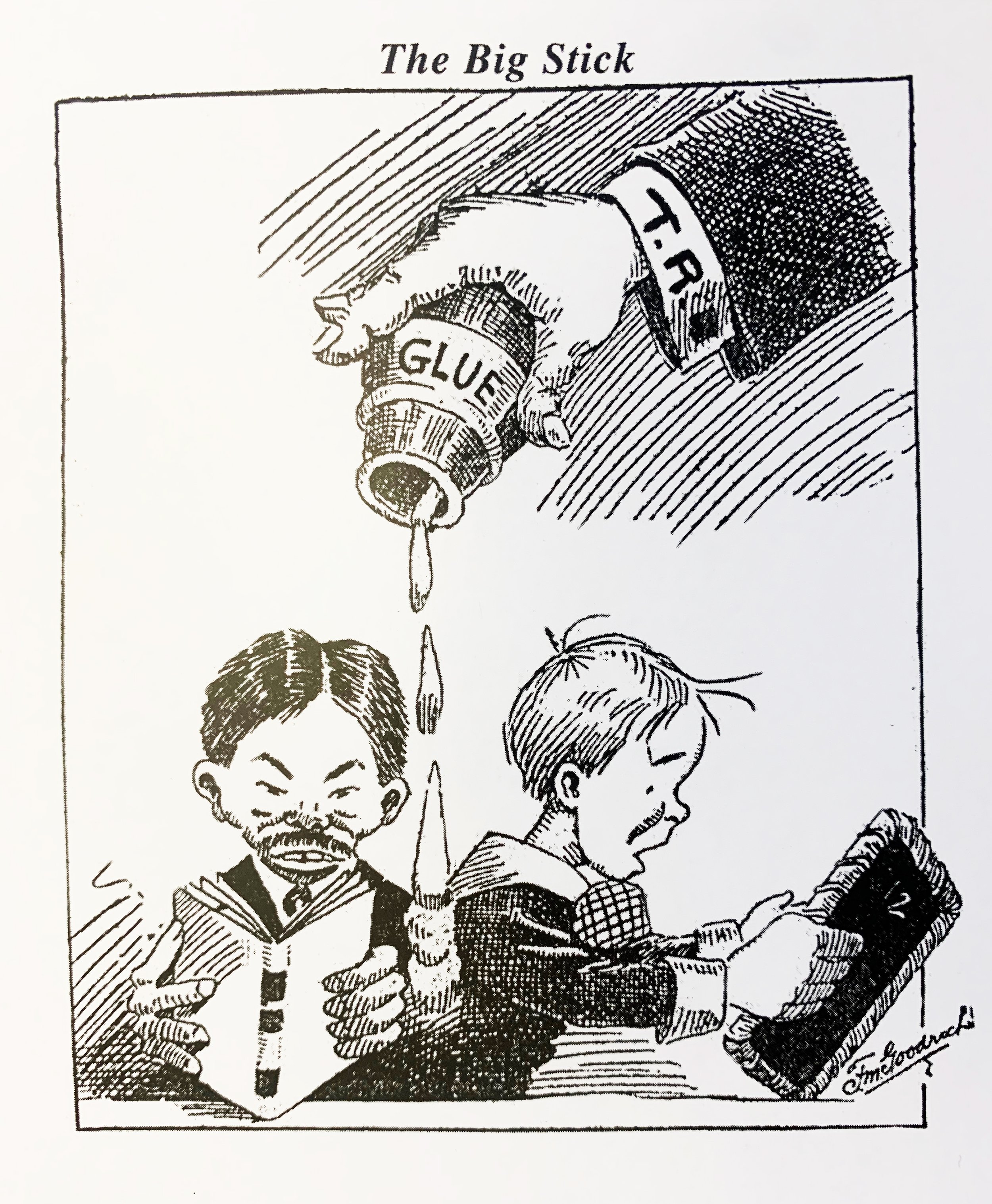Chapter 3
The Scott Brothers:
Arms and the Overland Monthly
Imperial cities rely upon the military to secure and expand their hinterlands as well as to bolster their economies in time of peace. Henry and Irving Scott controlled not only San Francisco’s leading iron works and armaments plant but the West’s premier magazine whereby they could popularize the conquests of the Spanish- and Philippine-American Wars and the acquisition of Hawai’I in 1898. Those conquests did much to establish a racial hierarchy that served the profitable exploitation of new colonies but which also created friction with the equally ambitious Japanese empire in both the western Pacific and in San Francisco itself.
“San Francisco sits by the Golden Gate and receives the Tribute of the Orient.” The Wasp, December 16, 1899. From photos by Alisky taken for the Wasp. Miss Nance O’Neill, the famous actress, posing for San Francisco.
Notes
For more information on all the materials cited see the further reading page.
San Francisco Bay as Pacific Launchpad
2. The government assisted land sales by forbidding shipyard workers to live on the base. Frisbie and Vallejo also attempted to have the state locate its capital at Vallejo. As head of the First Vallejo Rifles during the Civil War, Frisbie was appointed to the rank of general by his law school friend Governor Leland Stanford.
The Union Iron Works
6. A letter from the secretary of the navy to Congress reported that when the first examination of the bay had been conducted by a board of naval officers in 1852, the rivers emptying into it had been clear and deep, but that twenty-seven years later the damage done by hydraulic mining was so extensive that Congress would have to take action to save the base. See United States War Department, “Sand Bars.”
11. Walter Martin’s mother, Eleanor Downey Martin, was the social leader of nineteenth-century San Francisco and was sister-in-law of Peter Donahue; Martin was a director of Henry Scott’s Pacific Telephone Company and a member of James D. Phelan’s select circle of Irish-American capitalists.
The Overland Monthly
15. See especially Noel-Baker, “The Influence Exercised by Private Manufacturers of Arms on Opinion through the Control of the Press,” in Private Manufacture of Armaments, 225-89.
Spanish-American War
24. See Franklin, War Stars, for the long pursuit of the ultimate weapon.
War with the Filipinos
25. See, e.g., the special edition of the working-class San Francisco Bulletin of March 9, 1902, beginning with an illustration captioned “San Francisco, the Queen of the Pacific and Arbiter of the Orient,” which explicitly notes the importance of the Philippines as a gateway for the Asiatic empire and graphically draws an analogy with Rome. An article by I. M. Scott, titled “ Ship Building on the Pacific,” forecasts a bright future for West Coast armament industries stimulated by the iron ores and cheap fuels available in Asia. Nearly identical special editions can be found in the other leading San Francisco dailies.
29. Clemens, “Mark Twain on American Imperialism,” 50.
32. United States Congress, House of Representatives, Congressional Record, 57th Cong., 1st sess., 1 5 May 1902, 552 5. Representative Gaines of Tennessee quoted Smith’s statements in a hearing on naval appropriations, insisting that the “ new” imperial policy would not only betray Americ a’s founding principles but commit it to growing militarization and federal expenditures.
The inexhaustable Philippines
38. In a private letter dated 6 October 1 898, attorney Hall McAllister Jr. told Frederick Sharon (both of them brothers-in-law of Representative Newlands and trustees of the Sharon estate), “We are all much interested in reading the progress of negotiations in Paris of the Peace Commissioners, and I ardently cheri sh the hope that we shall retain the entire Philippine group. It would, of course, prove of incalculable benefit to San Francisco and would vastly improve the prospects of all business and properties here.” Sharon Family papers, part 1, box 9.
A Protracted War of Kindness
50. Boxed quote in a full-page graphic, San Francisco Examiner, 4 July I 899. The Reverend Dr. W.S. Urmy added, “I believe that the Philippines are but a stepping-stone to further conquest, and if China is to be divided up the United States must have a hand in the partition and take its share.”
Racial Solutions
54. Van Meter, Truth about the Philippines, 368. The statement is that of Frank Berger, nominated to the chief justiceship of Puerto Rico by President McKinley, but it was commonly voiced by others as well. Some eyewitnesses claimed that the Philippine War was, in fact, one of extermination. See Francisco and Fast, Conspiracy for Empire, 312.
The Yellow Peril
56. Wilson, “Yellow Peril, So-Called,” 134. A rare sympathetic view of Asians and a plea for tolerance.
59. Kaneko, “American Millions for Japan’s War,” 61 24-26. Kaneko describes how wealthy men and women swarmed New York’s Kuhn, Loeb and Company, eager to buy Japanese war bonds, concluding that “the sympathy, the confidence, and the co-operation of the American people will not be forgotten while the Empire across the sea endures.” San Francisco’s newspapers were just then initiating the Yellow Peril.
Predictions of a Racial Apocalypse
66. E.g., Minnesota governor John A. Johnson wrote in 1909 of the relentless march of the Caucasian race, which sought “the commercial supremacy of the Pacific and the industrial conquest of the Orient.” It could not do otherwise, for “the history of the Westward march of the Aryan race, the story of the pioneers and the toilers who from time immemorial have hearkened to the call of the West, is the record of human progress-the history of civilization.” The next section is entitled “Westerners Are Chosen People.” J. A. Johnson, “Call of the West,” 12138-39.
68. Walcott, “Our Share in Oriental Commerce,” 479-92. The author places the contemporary situation in a millennial context and predicts San Francisco will become a great world city built upon the wealth of the Orient if its merchants and manufacturers aggressively seek it.
The Cruise of the Great White Fleet
73. London, “Impossibility of War,” 278-82.
75. Eight hundred and fifty-seven recorded engagements followed Roosevelt’s announcement.
77. These enormous casualty figures had to be covered by the mythology of benign penetration; e.g., “Our national development has long been westward and we have now commenced a peaceful and wholesome commercial invasion of the Orient to place the products and civilization of the greatest Republic on the earth before the greatest empire and labor markets of the world.” Finley, “Discharging a Philippine Army, “ 124.
78. An ancillary benefit would be the display of American armaments for foreign powers eager to buy.
An Ever-expanding Military
83. See, e.g., Kingsley, “Japan’s War Tax and Poverty,” 9331 -41. Alone among the major San Francisco newspaper editors, the Bulletin’s Fremont Older opposed militarism for its exploitation of the poor. He placed the blame for the arms race on munitions merchants and “half-baked aristocracies.” See Frost, Mooney Case, 64-65.
85. “San Francisco and Hawaii Linked in Kinship,” San Francisco Chronicle, 12 April 19r4. See also “Hawaiian Advantages as a Naval Outpost,” San Francisco Chronicle, 31 January 1898, for a frank appraisal of Pearl Harbor as a forward base made before formal annexation of the islands, recalling the importance of San Francisco Bay as the chief prize of the Mexican-American War.
89. Irish, “Anti-Japanese Pogrom” (broadside in Bancroft Library). Irish called Phelan’s campaign one of cruelty, inhumanity, and dishonor, violating both the Fourteenth Amendment and treaties with Japan. See also Irish’s article “Orientals in California,” 332-33. Irish raised a Japanese boy as a foster son.
90. Street, “Battle of the Pacific,” 898- 912. By this time, Sunset had, as the promotional arm of the Southern Pacific Railroad, replaced the Overland Monthly as a leading voice of Pacific imperialism.
92. Lotchin calls this dependence the military-metropolitan complex in a book aptly subtitled “From Warfare to Welfare.” See Fortress California.
95. E.g., “California to Control the Vast Richness of Panama: Virgin Empire for Investors,” San Francisco Call, 23 February 1913, which concluded: “But with or without annexation, Panama is to be, in effect, a new empire for California, and the foundation of new California fortunes, with a consequent influence upon San Francisco’s banking preeminence in the West.”
Admiral Dewey’s victory at Manila Bay in 1898 opened the prospect of vast new markets for U.S. products, such as tobacco, as well as access to the apparently limitless resources and labor of Asia. The Wave, September 10, 1898. Courtesy California State Library.
Scientific American called the Union Iron Works shipyard on Potrero Hill one of the most modern and best equipped producers of warships in the world. Scientific American, July 2, 1892.
Methodist ministers rejoice that Christ is behind the bayonets of U.S. troops in the Philippines and that God directs the war. San Francisco Examiner, July 4, 1899.
Teddy Roosevelt dedicates the completed Naval Monument, or Dewey Monument, in Union Square, 1903. Courtesy Bancroft Library.
A preliminary design by Daniel Burnham’s West Coast representative, Willis Polk, shows San Francisco’s Nob Hill remade in the image of Rome’s Capitoline hill and new boulevards slashing through the existing grid below. San Francisco Bulletin, December 25, 1904.
“History Repeats Itself.” A Native American advises a Filipino insurrecto that opposition to American troops is futile. The Wasp, May 13, 1899.
“The Big Stick.” San Franciscans objected angrily when Teddy Roosevelt ordered the city’s schools desegregated in his attempt to avoid war with Japan. San Francisco Call, March 7, 1907.
The popularity of the Great White Fleet, like that of the Spanish-American War, proved useful for advertisers such as Pears’s Soap, which linked battleships to personal and racial hygiene. The Overland Monthly, March 1908. Courtesy Bancroft Library.


